Key Takeaways
1. Female Desire: More Animalistic and Omnivorous Than We Think
To stare at the data amassed by the plethysmograph was to confront a vision of anarchic arousal.
Hidden arousal. Psychologist Meredith Chivers's pioneering research used a plethysmograph, a device measuring vaginal blood flow, to reveal women's physiological arousal. Her studies showed that women, regardless of their stated sexual orientation, exhibited significant genital arousal to a wide range of stimuli, including heterosexual, lesbian, gay male, and even bonobo porn. This "anarchic arousal" contradicted the common belief that female desire is narrowly focused.
Beyond categories. Unlike men, whose physiological arousal is "category specific" (straight men aroused by women, gay men by men), women's bodies responded indiscriminately. This suggests a primal, less selective sexual responsiveness at a biological level. The findings challenge the notion that women's desire is inherently demure or solely tied to specific types of partners.
Primal truths. Chivers's work aimed to strip away cultural influences and apprehend women's "primal and essential selves." The plethysmograph offered a glimpse into these fundamental sexual truths, indicating that female desire is an underestimated and constrained force, far more expansive and "animal" than societal norms suggest.
2. The Mind-Body Disconnect: Women's Arousal Often Hides in Plain Sight
Minds denied bodies.
Subjective vs. objective. Chivers's experiments revealed a dramatic discord between women's physiological arousal (measured by the plethysmograph) and their self-reported feelings of excitement (keypad ratings). While their genitals showed strong, indiscriminate responses to various pornographic clips, women often reported feeling indifferent or less aroused, especially to gay male or bonobo sex. This "mind-body disconnect" was not observed in men, whose self-reports largely aligned with their physiological responses.
Societal influence. This dissonance suggests that women may consciously diminish or unconsciously block out their true arousal due to societal pressures. Psychologist Terri Fisher's "fake polygraph" study further supported this, showing women reported significantly more sexual partners and masturbation when they believed their answers were being verified, indicating a strong impulse to conform to perceived modesty norms.
Covert architecture. The inherent "covert architecture" of female genitalia, compared to the visible nature of male erections, might contribute to this disconnect, making women less attuned to their own physical sensations. This could be a product of both genetic predispositions and cultural conditioning, where girls are taught to maintain a psychic distance from their physical selves.
3. Societal Shackles: Culture Suppresses and Reshapes Female Lust
Being a human who is sexual, who is allowed to be sexual, is a freedom accorded by society much more readily to males than to females.
Historical repression. Throughout history, female desire has been simultaneously celebrated and feared, often leading to its suppression. From Eve's portrayal as the "Devil's gateway" to the Victorian era's ardent denial of female sexuality, cultural narratives have consistently sought to control and diminish women's erotic agency. This historical context shapes contemporary attitudes, where female lust is still viewed with suspicion.
Modern constraints. Even in seemingly sexually liberated times, subtle yet essential Victorian thinking persists. Evangelical purity movements, secular sexual protectionism for girls, and widely believed (but thinly supported) evolutionary psychology theories all contribute to a cultural environment that encourages female modesty and restraint. This creates a "sexophobia" that even researchers internalize.
The "Eeew" factor. Meredith Chivers recalled a powerful moment in her college class where women reacted with disgust ("Eeew!") to a close-up of a vulva, but not to a penis. This visceral reaction, she noted, was an expression of a long history of "prohibitions and restrictive perspectives on female sexuality." The very existence of these pervasive barriers, she argued, is a testament to the immense power of the underlying female drive.
4. The "Sexual Fable": Evolutionary Psychology's Misleading Narrative on Women
The sexual insights of evolutionary psychology can sometimes seem nothing but a conservative fable, conservative perhaps inadvertently but nevertheless preservationist in spirit, protective of a sexual status quo.
Parental investment theory. Mainstream evolutionary psychology, particularly David Buss's "parental investment theory," posits that men are hardwired to seek multiple partners (due to limitless sperm) while women are programmed to be choosy (due to limited eggs and high reproductive investment). This theory, widely absorbed into common wisdom, suggests that male randiness and female modesty are genetically encoded and universal.
Flawed foundation. This theory's foundation is precarious, as it largely dismisses the profound impact of social learning and cultural conditioning. The widespread celebration of male promiscuity and female modesty globally might reflect male-dominated cultures and historical fear of female sexuality, rather than immutable biological truths. The theory serves to preserve a "sexual status quo" by labeling observed differences as "natural."
Misleading science. Pop psychology books often use fMRI brain scans to "prove" these evolutionary theories, claiming to show innate differences like the "girl brain" being "built for connection" and the "boy brain" for "frenzies." However, neuroscientists confirm that fMRI technology is not precise enough to map such complex emotional neurology, and experience constantly alters neurological systems, making definitive claims about inborn gender differences premature and often misleading.
5. Novelty and Dominance: Primate Behavior Reveals Unacknowledged Female Drives
Rhesus females are very xenophobic when it comes to other females... But when it comes to males, females have a bias toward novelty.
Female initiators. Primatologist Kim Wallen's decades of research on rhesus monkeys revealed that females are the primary sexual initiators, aggressively pursuing males and exhibiting a strong "bias toward novelty" in partners. This contradicts earlier scientific views that depicted female monkeys as passive, a misconception Wallen attributed to male scientists' preconceptions and observations in unnaturally small cages.
Pleasure-driven rats. Neuroscientist Jim Pfaus's work with rats, building on Martha McClintock's findings, further demonstrated active female desire. Female rats solicit sex through specific behaviors (hops, darts) and control the pace of mating to prolong pleasure and increase the chances of conception. Experiments showed female rats would choose a brightly lit, dangerous chamber if it was associated with satisfying sex, indicating a powerful drive for immediate gratification.
Clitoral significance. The historical "willful diminishing" of the clitoris in anatomical studies, despite its extensive internal structure (mapped by Helen O'Connell), reflects a broader scientific bias against acknowledging the depth of female pleasure. The active, pleasure-seeking behaviors of female primates and rodents, coupled with the anatomical reality of the clitoris, suggest that female desire is far more potent and novelty-seeking than commonly assumed in humans.
6. The Narcissistic Core: Women's Desire to Be Desired
To be desired was at the heart of women’s desiring.
The allure of being wanted. Psychologist Marta Meana argues that narcissism, in a descriptive rather than judgmental sense, lies at the core of women's sexual psyches. Women are erotically excited by the feeling of being intensely desired, often imagining their own bodies as the object of overwhelming male craving. This is exemplified by women's eye-tracking patterns, where they look equally at male faces (expressions of desire) and female bodies (the desired flesh).
Distance fuels lust. Meana contends that lust requires a measure of distance, not closeness. The popular romantic ideal of "merging" with a partner or being "completed" by them can suffocate eros, as it eliminates the separation necessary for a lover's drive to cross. For women, the heat of being desired can wane in long-term relationships because the partner is no longer making a "choice" driven by unmanageable need.
The "alley" fantasy. Meana's controversial "alley" scene, where a woman is "ravished" by a man overcome with craving, symbolizes this ultimate female lust. While not endorsing actual violence, the fantasy highlights the desire to be so uniquely and uncontrollably wanted that the aggressor breaks all codes. This "submission" fantasy, often rooted in a desire to escape guilt or societal constraints, paradoxically offers a sense of control through being utterly desired.
7. Monogamy's Paradox: A Challenge, Not a Natural Fit, for Female Libido
The idea that monogamy serves the natural sexuality of women may not be accurate.
Waning desire. Many experts, including psychologist Lori Brotto and primatologist Kim Wallen, suggest that monogamy acts as a "cultural cage" for female libido. Research indicates that women's desire tends to wane more swiftly in committed relationships than men's, often leading to "hypoactive sexual desire disorder" (HSDD), which Brotto notes is a "normal abnormality" in long-term partnerships.
Boredom and familiarity. The problem often stems from boredom and the loss of novelty, rather than hormonal issues or relationship problems. While intimacy is valued, it doesn't reliably spark or sustain lust. The feeling of being "trapped" or no longer uniquely chosen by a partner can diminish a woman's narcissistic need to be desired, which is crucial for her arousal.
Evolutionary counter-arguments. Primatologist Sarah Blaffer Hrdy's work on female promiscuity in other species (e.g., monkeys masking paternity, book scorpions seeking new mates) suggests an evolutionary predisposition against strict monogamy for females. She argues that female orgasm, often requiring protracted stimulation, might have evolved to encourage "libertine" behavior, ensuring varied sperm and better reproductive outcomes, further challenging the notion of women as naturally monogamous.
8. Orgasm's Enigma: Beyond the Clitoris, a Complex and Debated Landscape
The great question that has never been answered... is, What does a woman want?
Freud's legacy. Sigmund Freud controversially decreed that "mature" female orgasms occurred vaginally, dismissing clitoral stimulation as "immature." This led to decades of women attempting to train themselves for vaginal orgasms and researchers like Marie Bonaparte trying to surgically alter anatomy to achieve this elusive goal. This historical bias has deeply influenced the understanding of female pleasure.
The G-spot debate. The discovery and popularization of the G-spot by Beverly Whipple in the 1980s ignited a fierce debate, proposing an internal vaginal zone capable of astonishing orgasms. Despite ongoing controversy and studies like the twin experiment (suggesting it's not a distinct anatomical entity), Komisaruk and Whipple's research with paraplegic women (who experience vaginal orgasms despite spinal cord injuries) suggests that distinct nerve pathways (hypogastric and vagus) bypass the spine, leading to "deeper" internal sensations.
Multiple pathways. Modern science now recognizes that female orgasm can arise from various sources, including the external clitoris, vaginal stimulation (potentially involving clitoral extensions or urethral lining), and even the cervix. The complexity of these "four orgasms" highlights the intricate and still largely mysterious mechanics of female pleasure, challenging simplistic or singular explanations.
9. The Aphrodisiac Quest: Science Grapples with Desire's Elusive Chemistry
There’s a bias, a bias against—a fear of creating the sexually aggressive woman. There’s this idea of societal breakdown.
The "Viagra for women" chase. Pharmaceutical companies have invested billions in developing a "female Viagra," aiming to cure the widespread problem of waning female desire, particularly in long-term relationships. However, drugs like Intrinsa, Libigel (testosterone-based), Flibanserin, and Bremelanotide have largely failed FDA approval due to inconsistent efficacy, side effects, or the placebo effect proving equally potent.
Hormonal muddle. The science of female sexual biochemistry remains imprecise. Testosterone's role, for instance, is puzzling: adding it doesn't reliably increase desire, and its depletion (e.g., by birth control pills) doesn't always reduce it. This "muddle" highlights how desire often hides from simple physiological explanations, suggesting complex interplay with psychological and social factors.
Fear of female lust. Beyond scientific hurdles, a significant "bias" and "fear of creating the sexually aggressive woman" has influenced drug development and FDA review. Companies worried their aphrodisiacs might be "too effective," leading to "societal breakdown" if women became "nymphomaniacs." This underlying cultural anxiety about unbridled female desire impacts the very pursuit of its chemical enhancement.
10. The Power of Fantasy: Unlocking Latent Lust and Rewiring the Brain
Fifty Shades is activating the whole neurochemical soup of wanting.
Fantasy as fuel. For many women, fantasy serves as a crucial tool for accessing and intensifying desire, especially when physical arousal is remote or in long-term relationships. Whether it's imagining a "marauder approach," a celebrity encounter, or explicit scenarios from "mommy porn" like Fifty Shades of Grey, these mental landscapes can powerfully ignite lust.
Neurochemical activation. Neuroscientist Jim Pfaus explains that such fantasies activate the brain's "neurochemical soup of wanting," particularly dopamine, the main carrier of desire. This mental stimulation can lead to physiological arousal and orgasm, even in the absence of physical touch, as demonstrated by women who can "think themselves to orgasm."
Dendritic arborization. Consistent engagement with fantasy can lead to "dendritic arborization," where the brain's neural networks for desire become denser, more sensitized, and more capable of activation. This suggests that actively cultivating erotic thoughts and fantasies can, over time, rewire the brain, potentially increasing overall responsiveness and making women "at least a bit more eager" for their partners, even if real-life circumstances are less thrilling.
Last updated:
Review Summary
What Do Women Want? explores female sexuality through scientific research and personal anecdotes. Reviewers found it thought-provoking but flawed, praising its challenges to conventional wisdom about female desire while criticizing its organization and writing style. Many appreciated the book's insights into topics like monogamy, arousal, and fantasies, but some felt it lacked clear answers. Overall, readers found it an accessible introduction to a complex subject, though opinions varied on its effectiveness and conclusions.
Similar Books

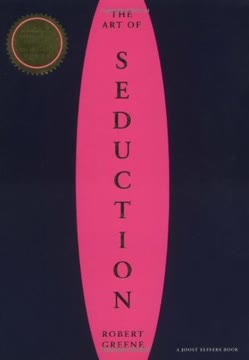

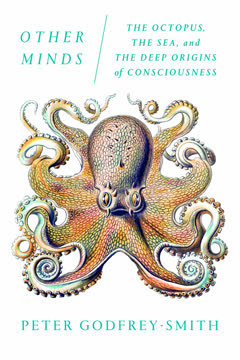
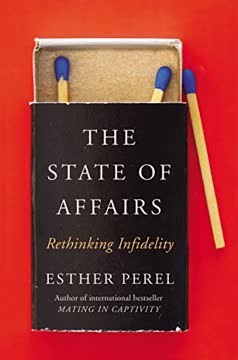
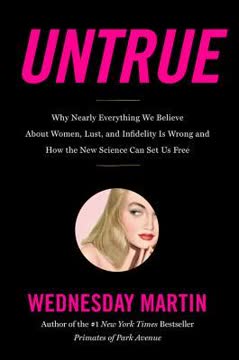
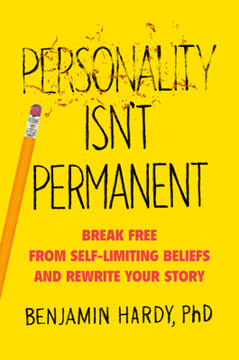
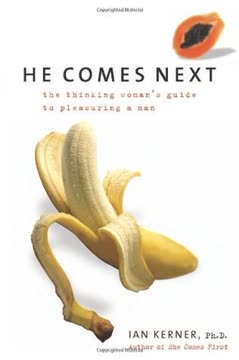
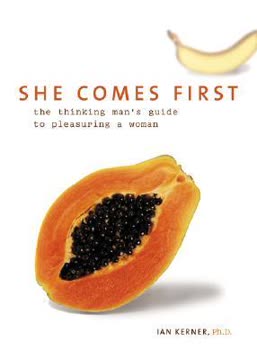
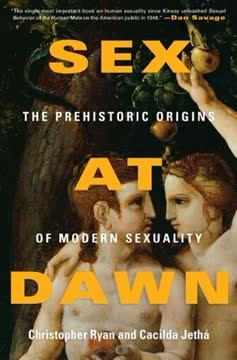
Download PDF
Download EPUB
.epub digital book format is ideal for reading ebooks on phones, tablets, and e-readers.





